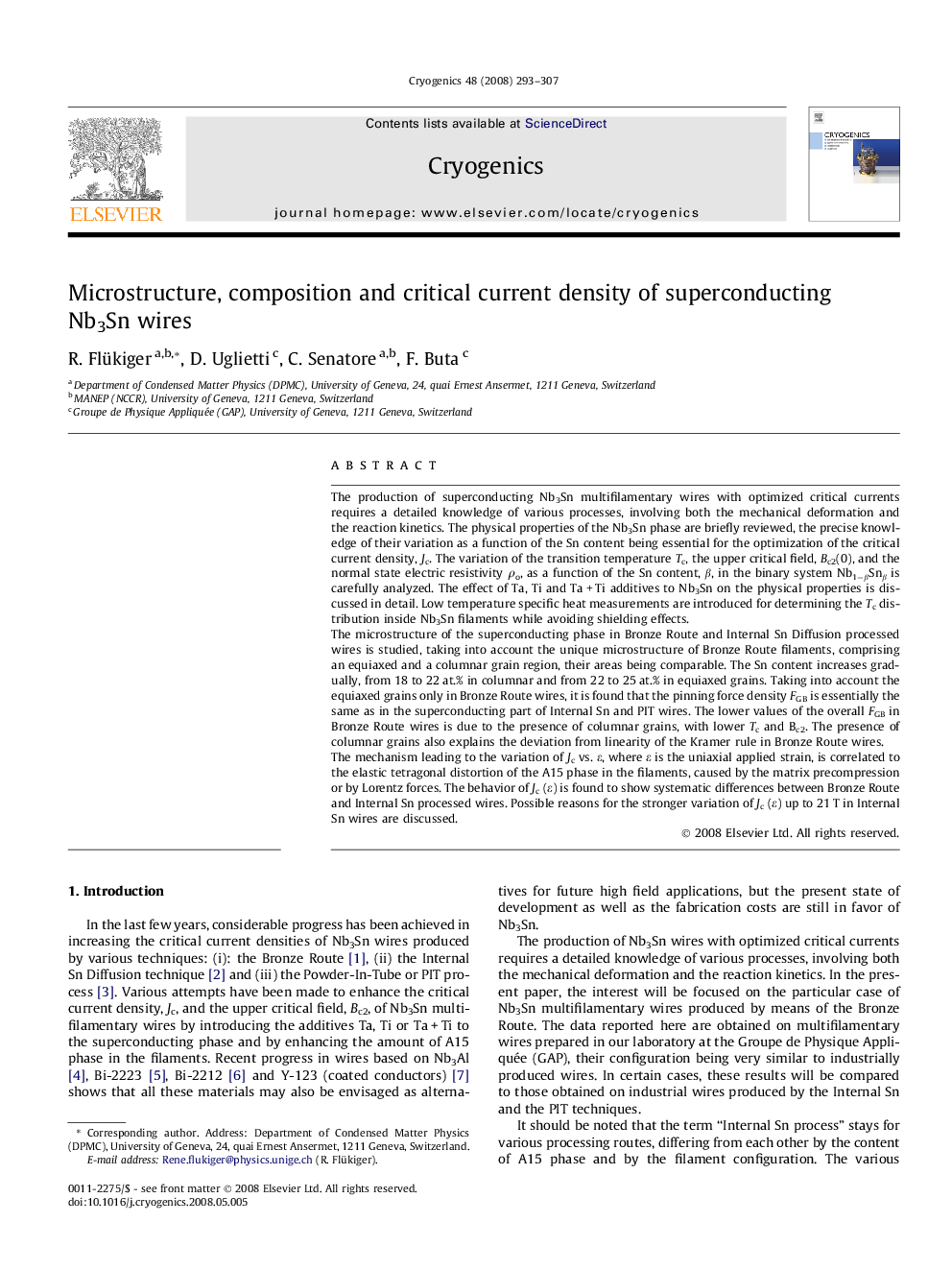| کد مقاله | کد نشریه | سال انتشار | مقاله انگلیسی | نسخه تمام متن |
|---|---|---|---|---|
| 1508207 | 1511068 | 2008 | 15 صفحه PDF | دانلود رایگان |

The production of superconducting Nb3Sn multifilamentary wires with optimized critical currents requires a detailed knowledge of various processes, involving both the mechanical deformation and the reaction kinetics. The physical properties of the Nb3Sn phase are briefly reviewed, the precise knowledge of their variation as a function of the Sn content being essential for the optimization of the critical current density, Jc. The variation of the transition temperature Tc, the upper critical field, Bc2(0), and the normal state electric resistivity ρo, as a function of the Sn content, β, in the binary system Nb1−βSnβ is carefully analyzed. The effect of Ta, Ti and Ta + Ti additives to Nb3Sn on the physical properties is discussed in detail. Low temperature specific heat measurements are introduced for determining the Tc distribution inside Nb3Sn filaments while avoiding shielding effects.The microstructure of the superconducting phase in Bronze Route and Internal Sn Diffusion processed wires is studied, taking into account the unique microstructure of Bronze Route filaments, comprising an equiaxed and a columnar grain region, their areas being comparable. The Sn content increases gradually, from 18 to 22 at.% in columnar and from 22 to 25 at.% in equiaxed grains. Taking into account the equiaxed grains only in Bronze Route wires, it is found that the pinning force density FGB is essentially the same as in the superconducting part of Internal Sn and PIT wires. The lower values of the overall FGB in Bronze Route wires is due to the presence of columnar grains, with lower Tc and Bc2. The presence of columnar grains also explains the deviation from linearity of the Kramer rule in Bronze Route wires.The mechanism leading to the variation of Jc vs. ε, where ε is the uniaxial applied strain, is correlated to the elastic tetragonal distortion of the A15 phase in the filaments, caused by the matrix precompression or by Lorentz forces. The behavior of Jc (ε) is found to show systematic differences between Bronze Route and Internal Sn processed wires. Possible reasons for the stronger variation of Jc (ε) up to 21 T in Internal Sn wires are discussed.
Journal: Cryogenics - Volume 48, Issues 7–8, July–August 2008, Pages 293–307